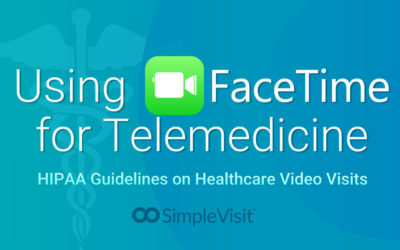Reimbursement Guide for California Telemedicine
Allie Clark | 1 min read | September 20, 2019
The telehealth community is often heard clamoring for more comprehensive guides to help practices and providers navigate the confusing and murky waters of reimbursement. The California Telehealth Resource Center has stepped up in a big way this month with the publication of their Telehealth Reimbursement Guide for California.
While about half of the guide is limited to plans currently operating in CA, it’s a great overview of the type of reimbursement policies that exist for payers that have policies nationwide, as well as a great example of the type of details you will need when you call the payers you are contracted with to enquire what they cover (best practice when starting up and running a telehealth program). Also included in this guide are sections on definitions and general telehealth information, and a thorough section on Medicare reimbursement and policies. At the end, there is a set of scenarios surrounding virtual care delivery and Federally Qualified Health Clinics or Rural Health Clinics. The first three describe reimbursement policies under Medicare.
While this guide is gold for California providers, it is also immensely helpful for any involved in the telehealth industry. California has a relatively progressive take on telehealth reimbursement, and could be a good benchmark for those advocating for policy advancements in their own states. The inclusion of the Medicare section really makes this a must-read for anyone involved in or interested in delivering telehealth services.
One of the main reasons providers steer clear of telehealth is the lack of reimbursement or clear information on whether reimbursement from insurance payers is even possible. Guides like this attempt to meet that need in order to increase the number of providers able and willing to engage in this form of healthcare delivery. Telehealth, when used correctly, solves so many access-to-care problems, as well as saves money for both providers and patients. It is the responsibility of the telehealth champions to reduce and remove as many barriers to providers wanting to use telehealth as possible. SimpleVisit applauds the CTRC for what they are doing to aid in that effort.
To download and read the guide, click here.
To see California Telehealth Resource Center’s full range of resources, or to contact them with your California-policy-related questions, click here.

Allie Clark
Allie is the Industry Analyst and Content Manager for SimpleVisit. Her educational background is diverse with Administrative Medical Assisting and Psychology as a focus with a dash of Business Communication and Theater. Events in her life have led to a passion for improving access to healthcare and a particular talent for research, which she is quickly turning into a career. Allie is able to use her combined experience to write and develop resources for SimpleVisit, and is fulfilled by the opportunity to contribute to innovation and progress in the healthcare industry as a whole.
Using FaceTime for Telemedicine
The following white paper is freely available for distribution. You can sign up for more resources on the HIPAA guidelines and using other video applications using the form below. For any questions or demo requests, please email info@simplevisit.com....
Are Providers Saving Time with Video Visits?
Time is money, and nowhere is this more true than in the world of healthcare. One of the early advantages of using telemedicine is time savings. Both patients and providers are utilizing video visits to be more effective with their visits and save time...
The International Man of Medicine: Dr. George Lombardi
This SimpleVisit Spotlight highlights an intriguing concierge doctor based in New York City who is caring for patients located all over the world. Dr. George Lombardi has added SimpleVisit’s telemedicine service to increase his ability to monitor patients...



